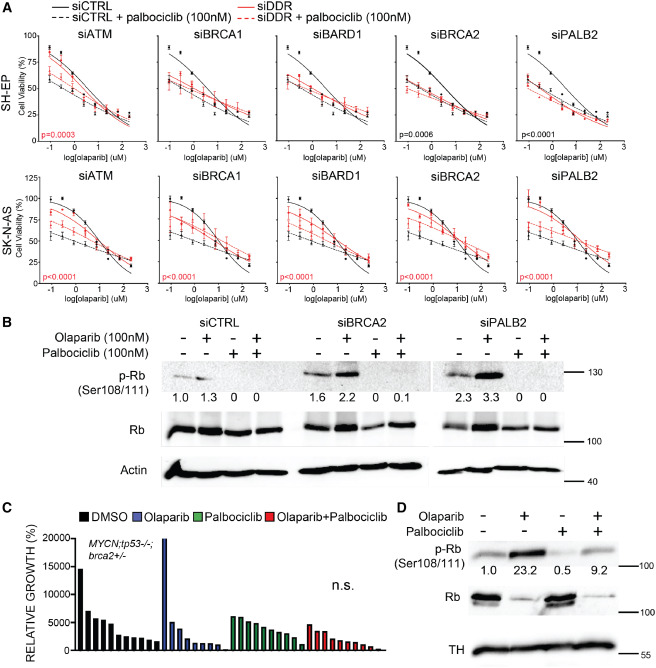Fig. 5 CDK4/6 inhibitor palbociclib does not synergize with olaparib in DDR-deficient NB cells (A) Cell-viability analysis in human NB cells following siRNA-mediated gene knockdown of DDR genes and 72-h treatment with olaparib (0.05–800 μM) + palbociclib (100 nM). Error bars represent mean ± standard deviation. p values represent comparisons of non-linear fits between siDDR and control (siCTRL) cells treated with olaparib + palbociclib. Black p values indicate increased sensitivity (decreased IC50) with siDDR. Red p values highlight resistance (increased IC50) with siDDR. Comparisons of best-fit values for all treatment groups are shown in Table S8. (B) Western blot analysis of phosphorylated Rb (p-Rb Ser108/111) and total Rb protein in SH-EP cells in response to olaparib and/or palbociclib treatments following control (siCTRL), BRCA2 (siBRCA2), and PALB2 (siPALB2) knockdown. Actin is used as loading control. p-Rb is quantified below each lane normalized to total Rb protein and untreated control (siCTRL). (C) Quantification of relative growth after DMSO vehicle control, olaparib (50 mg/kg), palbociclib (100 mg/kg), or olaparib + palbociclib dosing to zebrafish engrafted with EGFP;MYCN;tp53−/−;brca2+/− NB (n = 2 independent primary tumors). Differences between control and combination treatment groups is not significant (n.s.), Student’s t test. (D) Western blot analysis of phosphorylated Rb (p-Rb Ser108/111) and total Rb protein in response to treatment. Tyrosine hydroxylase (TH) is used as a loading control for total tumor cells. p-Rb is quantified below each lane and normalized to total Rb protein and vehicle control-treated sample. Replicate western blots are shown in Figure S8.
Image
Figure Caption
Acknowledgments
This image is the copyrighted work of the attributed author or publisher, and
ZFIN has permission only to display this image to its users.
Additional permissions should be obtained from the applicable author or publisher of the image.
Full text @ Cell Rep.

